If you want to do well with social media, then the first thing that you need is a strategy.
Right?
Maybe not – at least, according to Guy Kawasaki; venture capitalist, founder of Alltop.com, and the author of a dozen books, including the recent bestseller Enchantment.
Guy breaks a lot of the “established” rules of social media, and ignores a lot of the best practices taught by “social media experts”.
And you should listen to him.
After all, it’s hard to argue with a man who has well over 400K followers on Twitter and almost 60K Facebook likes!
The Three Pillars of Enchantment
The foundation of social media is elements that are timeless – they worked in Dale Carnegie’s time, and they still work today. The three elements are likeability, trustworthiness and quality.
1. Likability. If people don’t like you, they’re not going to listen to you, let alone purchase your product or service. People prefer to do business with people that they like, so it doesn’t take a rocket scientist to see that one of the best ways to develop relationships with your audience is to be likable. You smile when you meet someone in real life, and you can send a friendly greeting when you meet someone online.
2. Trustworthiness. You must do what you say you’re going to do when you say you’re going to do it. If you develop a reputation as unreliable, dishonest or questionable, you won’t enchant people. You develop trustworthiness by trusting others first, dealing fairly with everyone you meet, and making your conflicts of interest visible to people.
3. Quality. Arguably the most important of the pillars, everything you produce must be worth reading, buying, or just spending time thinking about. Great products and services are DICEE: deep, intelligent, complete, empowering, and elegant. Think about Apple’s products – you want to be the Apple of your market.
Applying the Pillars to Twitter, Facebook, and Google+
Once you have basics down pat, then you can move on to applying social-media tools such as Twitter, Facebook, and Google+.
These are fantastic tools that provide a megaphone that you can use to spread your message and develop your business. Unfortunately, “social media experts” cause a lot of confusion and frustration with their recommendations.
It starts with their recommendation that you absolutely must first create a strategy with goals, milestones, and expected results that you can follow, step-by-step, to success.
This is ridiculous.
It’s ridiculous because it overlooks the most important part of social media: that they’re social, free-flowing, ever changing, and malleable for each person’s style. If you were a kid going to a new high school for the first time, would you sit down and plan out a detailed, step-by-step strategy on how to make friends and become popular?
Not likely.
In fact, it would be pretty scary if you did.
Here’s how Guy uses Twitter, Facebook, and Google+. These aren’t the only ways, or the best ways – but this is how he uses them, and it works.
Twitter is a Link Economy
The currency of Twitter is links.
The way to get street cred is to share great content, whether it’s your own, or that of others.
Position yourself as a content expert by acting as a content curator. Don’t worry about frequency, and go ahead and tweet the same thing several times per day – just focus on finding lots of excellent content, and sharing it far and wide.
Guy has got hundreds of thousands of followers that are interested in the content he tweets about, because he tweets about things that he finds genuinely interesting, and that meet the standards of the three pillars.
If you’re genuinely engaging with people on Twitter, then you’re going to be creating relationships with people who have interests and passions that are at least somewhat similar to yours. This gives you the opportunity to expose them to new content and ideas and vice versa.
If something on the internet makes you say “Holy cow, that’s amazing.” It’s very likely that your audience will have the same reaction, and will appreciate it being brought to their attention.
So start researching, and start tweeting.
Facebook is a Picture Economy
With Facebook, it’s all about pictures.
Use pictures – whether you post them, or your readers post them – to trigger conversations. Create a fan page to position yourself as an expert, and then focus on pictures.
People, after all, are visual – they respond well to things that they see, and Facebook is the perfect environment for them to take what they see, and share it with their friends. That creates conversations.
Guy is much more proactive in terms of posting content and responding to people on Facebook. It’s active for him, whereas Twitter is more reactive.
The personal nature of Facebook inclines it towards honest interaction.
Even company pages are connected to personal accounts and your face is right there next to the actions you take. Another serious benefit to using Facebook as a communication forum is that your Facebook account is likely already filled with people who are interested in you, what you have to say and what you’re doing with your time. Take advantage of that fact.
So start uploading and tagging pictures.
Google+ is the Wild, Wild West
Let’s be honest – no one really knows what works on Google+ yet.
So far for Guy, Google+ is Facebook on steroids: post a picture or video and get up to hundreds of comments. Respond to the comments, and you get more comments. As far as I can tell, the only commonality in the items that Guy posts are that he finds them interesting, and that others largely agree. Because there’s more space than on Twitter, and the interface is much cleaner than Facebook, there’s opportunity for extensive dialogue.
But it’s really too soon to talk about best practices, except the best practice of jumping in and getting your feet wet. It’s going to be interesting over the next few months to see what turns out to be an effective and sustainable use of Google+, whether for business, or personal communications.
Whatever the best strategy for Google+ turns out to be, Guy will find it and use it, because he doesn’t wait for someone else to show him the way.
You can do the same – just jump in!
No Guts, No Glory
Regardless of the platform, set yourself up as a likeable, trustworthy, quality-driven person in your niche.
Just dive in by always posting great links, pictures, and video, and then see what happens. As you learn the capabilities and shortcomings of each platform, you’ll figure which one serves your needs the best—or maybe they all do in different ways.
Now the question is: Should you do as Guy does?
You shouldn’t trust him any more than you should trust social-media experts. This is what he does, and maybe his practices can help you.
Admittedly, he’s an outlier, and he breaks a lot of the “established” rules. This may not be something that you can get away with, or maybe, it’s what will make you successful.
There’s only one way to find out.
About the Author: Danny Iny (@DannyIny) is an author, strategist, serial entrepreneur, expert marketer, and the Freddy Krueger of Blogging. Together with Guy Kawasaki, Brian Clark and Mitch Joel, he wrote the book on how to build an engaged audience from scratch.
Note: This post is adapted from the new book Engagement from Scratch! How Super-Community Builders Create a Loyal Audience and How You Can Do the Same!
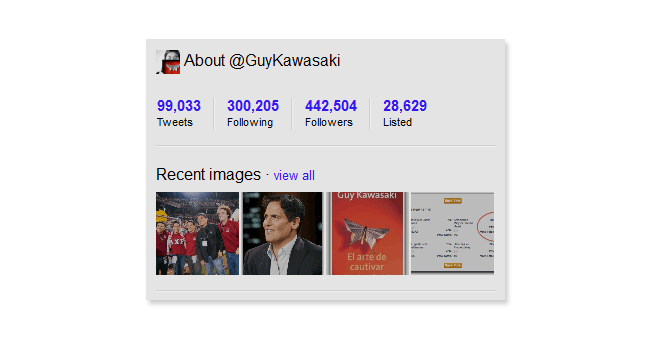
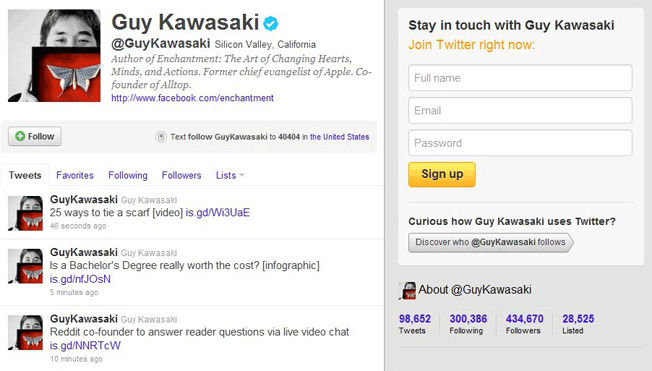
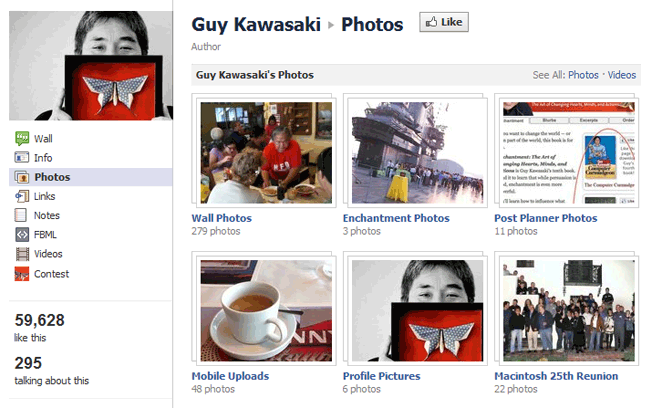
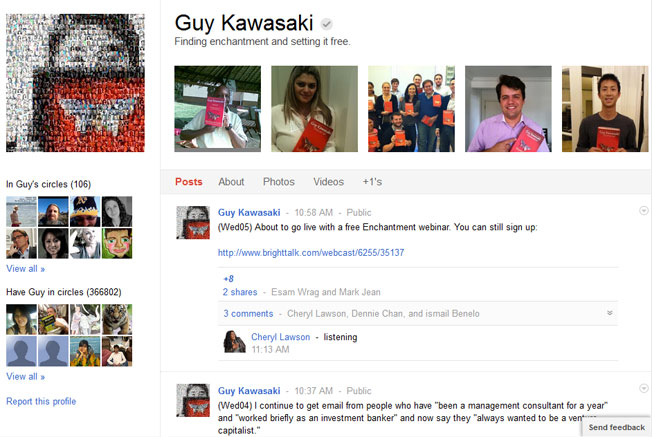
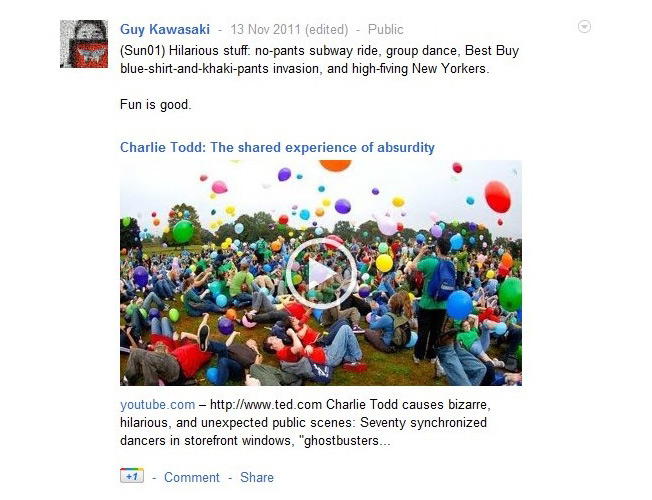
Comments (16)